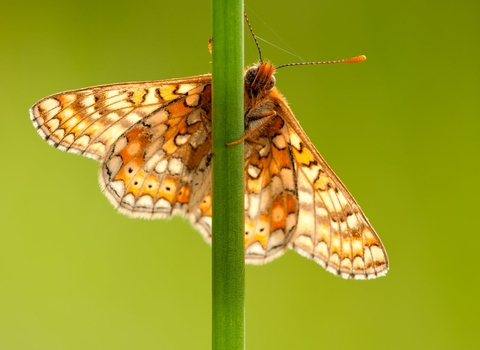Our wildlife sanctuaries are not accessible to the public. These sites are our most fragile nature reserves, or are rewilding sites in the process of recovery. As sanctuary sites, they play a vital role in helping the rarest and most vulnerable species across our two counties thrive, free from disturbance.
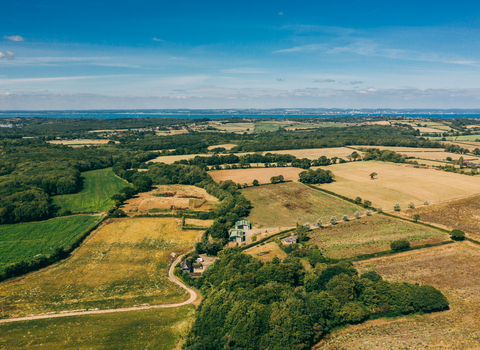
Wilder Little Duxmore
Nearest town: Newchurch, Isle of Wight
Description: Wilder Little Duxmore is our first rewilding site. The site, a former arable farm, discharges into the Wootton Creek which in turn runs into the Solent. As the Trust restores it to natural wildlife habitats, this will directly reduce nitrate inputs into the Solent. Since we have taken on this intensively managed farmland and started the rewilding process it is now full of rich arable flora with a great array of wildlife returning.
Special wildlife: By summer Wilder Little Duxmore comes to life with Kestrels hovering over the reserve. The site is fantastic for small birds such as goldfinches, linnet, skylark and starlings. They feed on the seeds available in the rough grassland which has developed naturally following the cessation of arable farming. Grass snakes, Adders, and lizards can also be seen in amongst the grasslands on a hot summer’s day.
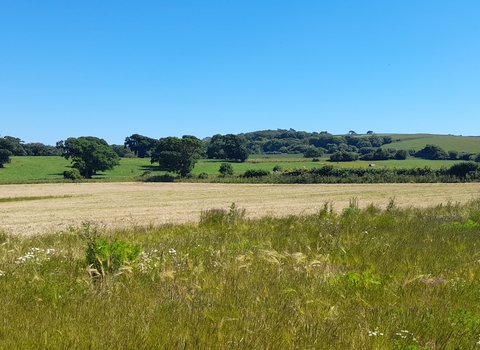
Wilder Nunwell
Nearest town: Brading, Isle of Wight
Description: Wilder Nunwell is our second rewilding project where we will be restoring this previously intensively managed farmland back to its natural landscape by embracing wilder processes and mimicking natural systems. Wilder Nunwell is at the start of its restoration journey but over time we hope to re-establish chalk downland, wildflower meadows and create wood pasture to improve the habitat for a wide range of species. We are looking to introduce native rare breed cows, Exmoor ponies, and pigs across the reserve to help us achieve our goals mirroring natural grazing systems.
Nunwell has always been a managed landscape and has a rich Island heritage as well as lots of archaeological interest. We are working closely alongside the Oglander family and Nunwell Home Farm to help create a Wilder Nunwell.
Special wildlife: By summer Wilder Nunwell is alive with a huge variety of arable birds including Skylarks, Linnets, Yellowhammers and finches. Skylarks can be heard singing and soaring in their characteristic way.
Swanpond Copse
Nearest town: Ryde, Isle of Wight
Description: This small, traditional hazel coppice of four hectares comes into its own in the spring when many wildflowers attract a variety of butterflies.
Special wildlife: In spring the ground is carpeted with primrose and wood anemone, followed by bluebells and narrow-leaved lungwort, commonly known as Jerusalem cowslip with beautiful blue and purple flowers. It has a thriving population of Hazel Dormice which is fantastic due to their rapidly declining numbers across the UK.
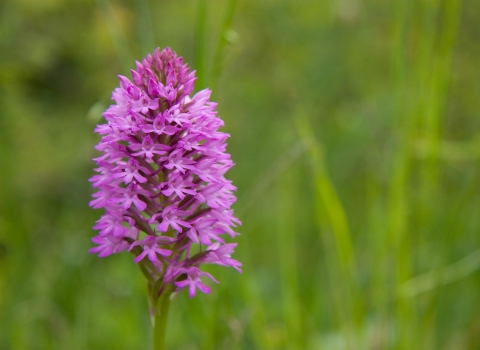
© David Kilbey
Fletchwood Meadows
Nearest town: Ashurst, west Hampshire
Description: Tucked behind a private woodland, these six hectares of ancient meadows support a large number of flowering plants and insects. Bartley Water runs along the reserve keeping the meadows damp in summer, which ensures that many scarce plants continue to flourish.
Special wildlife: The meadows host a wealth of plants and insects, including butterfly orchids.
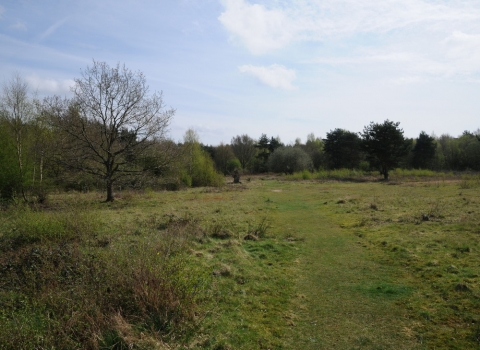
Headley Gravel Pit by Jonathan Oakley
Headley Gravel Pit
Nearest town: Headley, north Hampshire
Description: Once quarried for gravel, these seven hectares of woodland and grassland have become colonised by important wildlife, including reptiles and orchids.
Special wildlife: It has a population of black adders, thousands of green-winged orchids in late spring and interesting lichens.
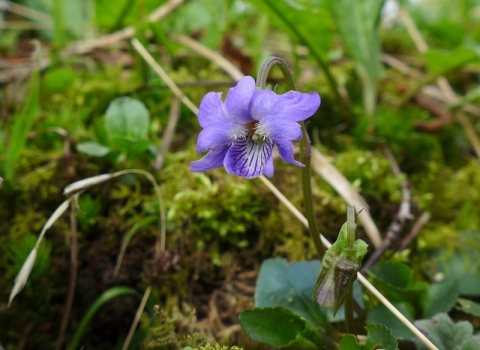
© Bob Chapman
Linwood Nature Reserve
Nearest town: Linwood, west Hampshire
Description: This woodland reserve, a gift from Gladys Haines, is a mixture of oak, birch and beech glades with areas of wet heath and meadows, beside the Dockens Water. This rich blend of habitats has created perfect conditions for a variety of wildlife.
Special wildlife: In late spring and early summer, enjoy the profusion of wildflowers including marsh thistle, violets, wood sorrel and wood sage.
Improved shingle spits with sand patches on Pewit Island © Chris Lycett
Pewit Island
Nearest town: Portchester, south east Hampshire
Description: One of the few undeveloped areas of Portsmouth Harbour, this one-hectare island is an important high tide roost for wading birds.
Special wildlife: Fine examples of saltmarsh, plant-rich shingle and an important high tide roost for wading birds. Although you cannot access this protected reserve, you can view it from the Portchester coastline.
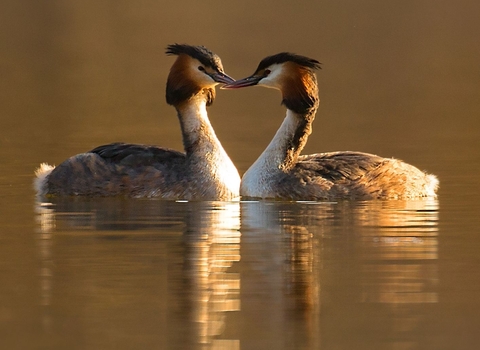
Grebe © Jon Hawkins - Surrey Hills Photography
Holmsley Gravel Pit Nature Reserve
Nearest town: Holmsley, west Hampshire.
Description: Surrounded by woodland, this longdisused gravel extraction site has evolved into a valuable refuge for local wildlife, including fourteen species of dragonfly.
Special wildlife: The open water and dense willow scrub attract a range of birds throughout the year including kingfisher, hobby and great crested grebe.
Hockley Meadows by Lianne de Mello
Hockley Meadows Farm
Nearest town: Twyford, south Hampshire.
Description: This working farm was purchased with donations from our supporters and a generous legacy from Miss Patricia James. The seasonal grazing regime, with the Trust’s cattle and sheep herds, is helping to restore the meadow. One field at the site is part of the River Itchen SSSI.
The farm also provides an essential hub to help us manage the grazing across many of our other nature reserves.
Special wildlife: Our sensitive conservation grazing methods allow sensitive grassland plants such as water avens, cuckoo flower and meadow sweet to thrive here.
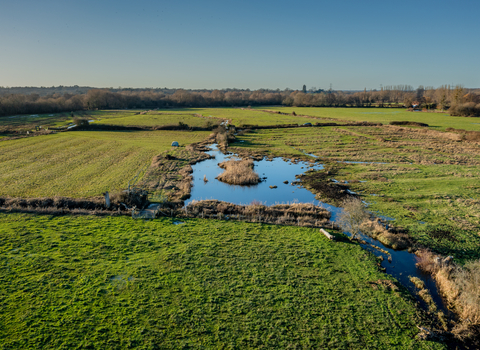
© StrongIsland
Manor House Farm
Nearest town: Totton, South Hampshire.
Description: Located along the Solent coast between Lower Test and Testwood Lakes Nature Reserves, this unique and distinctive site is a haven for overwintering wildfowl and waders as well as a spring breeding area for waders.
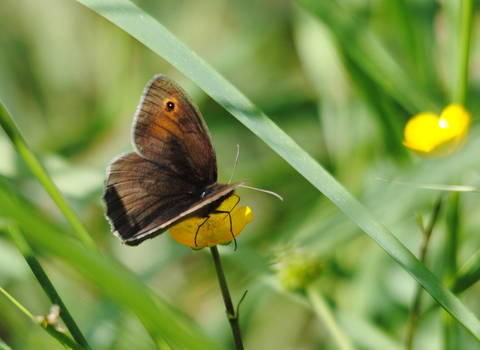
Meadow Brown © Amy Lewis
Whitehouse Meadow Nature Reserve
Nearest town: Fleet, north-east Hampshire
Description: Once part of a much larger landscape lost to development, Whitehouse Meadow now provides a vital wildlife oasis. A Site of Special Scientific Interest (SSSI).
Special wildlife: This small woodland and open meadow hosts plants such as lousewort, bedstraw and tormentil, along with butterflies like meadow brown.
© Mark Heighes
Old Burghclere Lime Quarry
Nearest town: Old Burghclere, north Hampshire
Description: Like many former quarries, this five hectare site has been transformed into a nature reserve as its steep sides of rough, chalky ground provide an ideal habitat for many rare plants and butterflies.
Special wildlife: There is an interesting mix of plants that are not found on many sites, such as red hemp-nettle, white helleborine, fly orchid, hairy rockcress and kidney vetch.
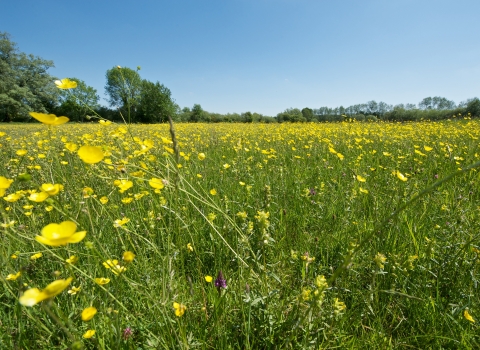
© Steve Page
Ron Wards Meadow
Nearest town: Tadley, north Hampshire
Description: This 10 hectare grassland was nurtured, carefully managed and passed on as a legacy to the Trust by Ron Ward. A survivor from yesteryear, this traditional meadow is exceptionally rich in wildflowers.
Special wildlife: A multitude of plants are found here, including dyer’s greenweed, yellow rattle, saw-wort, field scabious, quaking grass, southern marsh-orchid and common spotted-orchid hybrids.
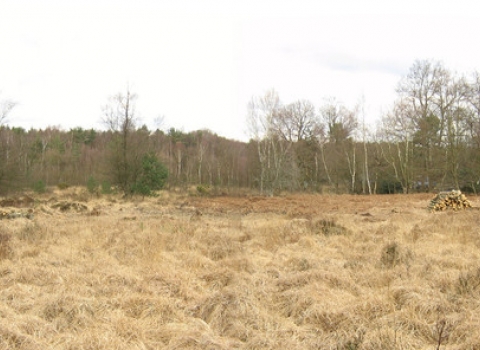
Weaver's Down Bog
Weavers Down Bog
Nearest town: Liphook, north-east Hampshire
Description: At just two hectares this pocket-sized wet heath and mire, surrounded by pine and birch woodland, is part of Woolmer Forest, and was a gift from Lord Selborne.
Special wildlife: It is one of only a few sites in Hampshire where the water-loving cranberry grows – a scarce species in southern England.
Silver washed fritillary © Graham Dennis
Hookheath Meadows
Nearest town: Southwick, south east Hampshire
Description: A tranquil meadow and woodland set in farmland and semi-natural ancient woodland. The 14 hectares comprise seven small, traditional and diverse meadows, bordered by scrub and woodland, and traversed by a river.
Special wildlife: Butterflies are plentiful in the summer, particularly silver-washed fritillary, and large numbers of other insects occur at the site, including a wide range of hoverflies.
© HIWWT Kate Garnham
College Copse Farm
Nearest town: Hook, north Hampshire
Description: College Copse Farm is one of the Trust’s working farms and consists of ancient woodland, hay meadows, woodland lakes and veteran trees. The Trust farms are crucial for supporting the livestock operation; growing winter feed for calving and lambing and homing livestock when the reserves do not require grazing.
St Lawrence Field six spotted burnet moth
St Lawrence Undercliff Woods
Nearest town: St Lawrence, Isle of Wight
Description: This unusual two hectare reserve is a sycamore and ash woodland growing at the foot of a rugged cliff. The woodland, a gift from Connie Pelham, is sheltered and south-facing, and the whole area is on the largest rotational landslip in Western Europe.
Special wildlife: It has an unusual ‘double coastline’ effect as the result of a massive cliff-slump, spectacular views out to sea, and hosts several species of bat. This reserve is best viewed from High Hat – a look-out point above it.
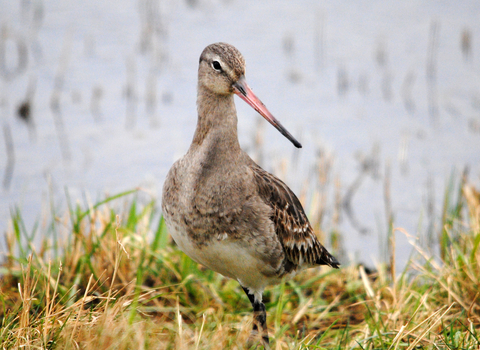
© Amy Lewis
Chawton Field Nature Reserve
Nearest town: Cowes, Isle of Wight
Description: This is an area of semi-improved grassland on the western bank of the River Medina, part of the important riverine habitat along the Medina estuary. This site is managed as a high tide roost for waders and wildfowl. In the summer the site turns into a wildflower meadow which is a fantastic habitat for invertebrates. It is a highly important conservation site for the River Medina as it increasingly becomes more urbanised.
Special wildlife: In the winter this site hosts numerous wildfowl and waders including, Brent Geese, Black-tailed Godwits and Lapwing. And in the summer, beautiful wildflower flora brings this grassland to life. Common Spotted Orchids are just one of the wildflowers that can be seen.

